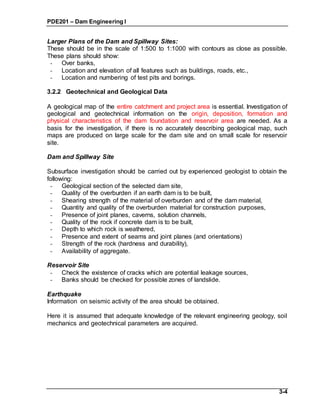This document discusses site investigation and selection of dam types. It outlines the functional and technical requirements that must be satisfied for a dam site, including hydrological characteristics, available head and storage, and geological/geotechnical properties. A coordinated team of specialists is needed to properly evaluate engineering, geological, and environmental factors. Site investigations involve collecting physical, topographic, geological, hydrological, and materials data to assess suitability and inform dam design. Key considerations for site selection include catchment characteristics, foundation conditions, material availability, and project development needs.







